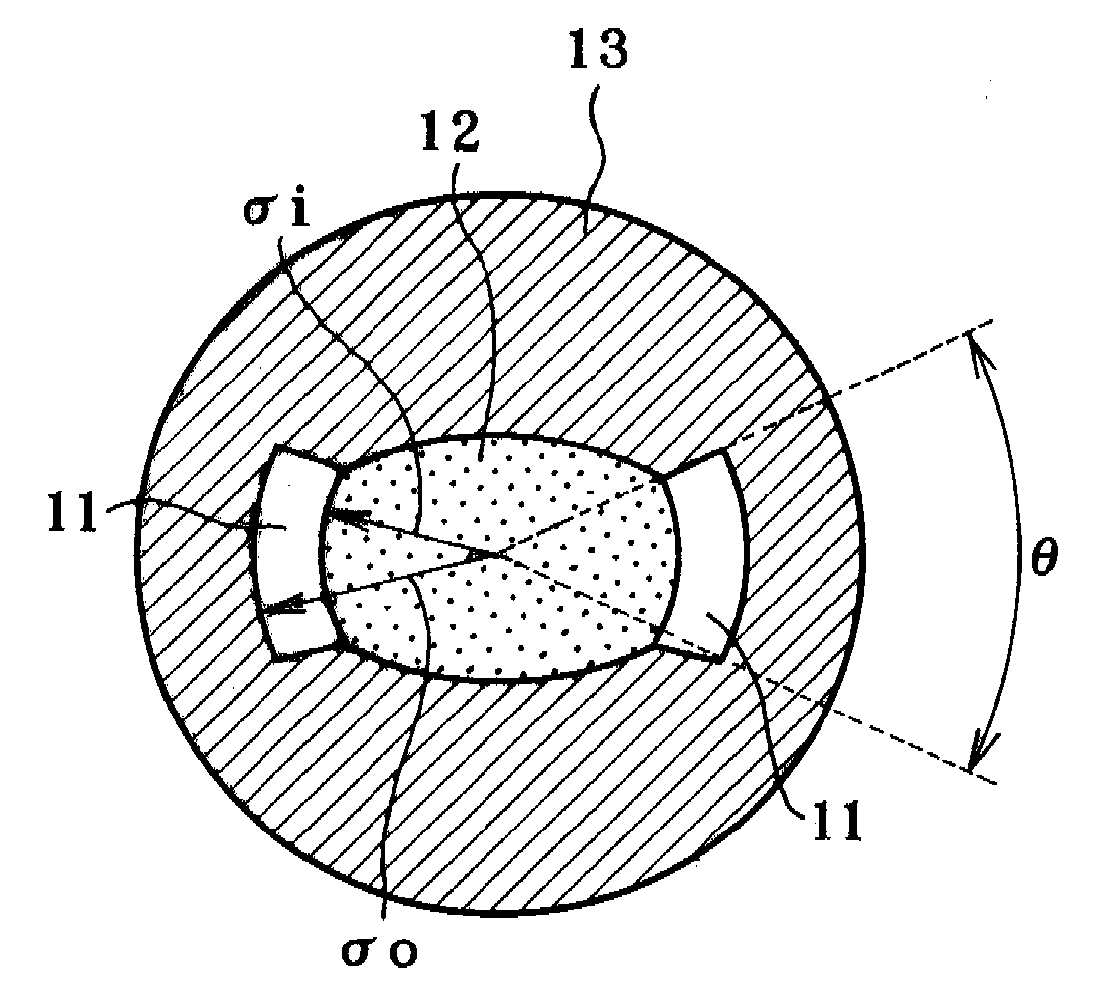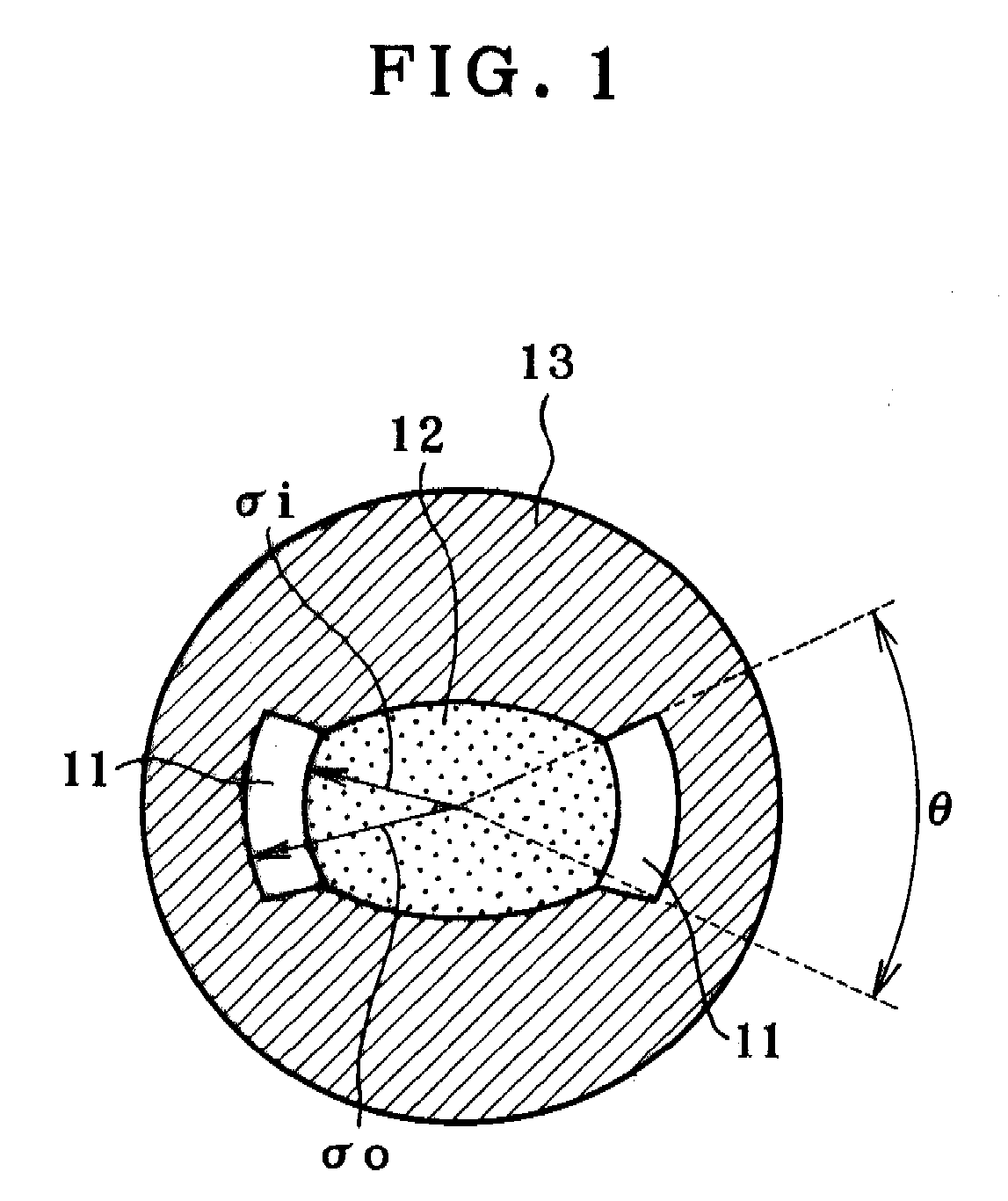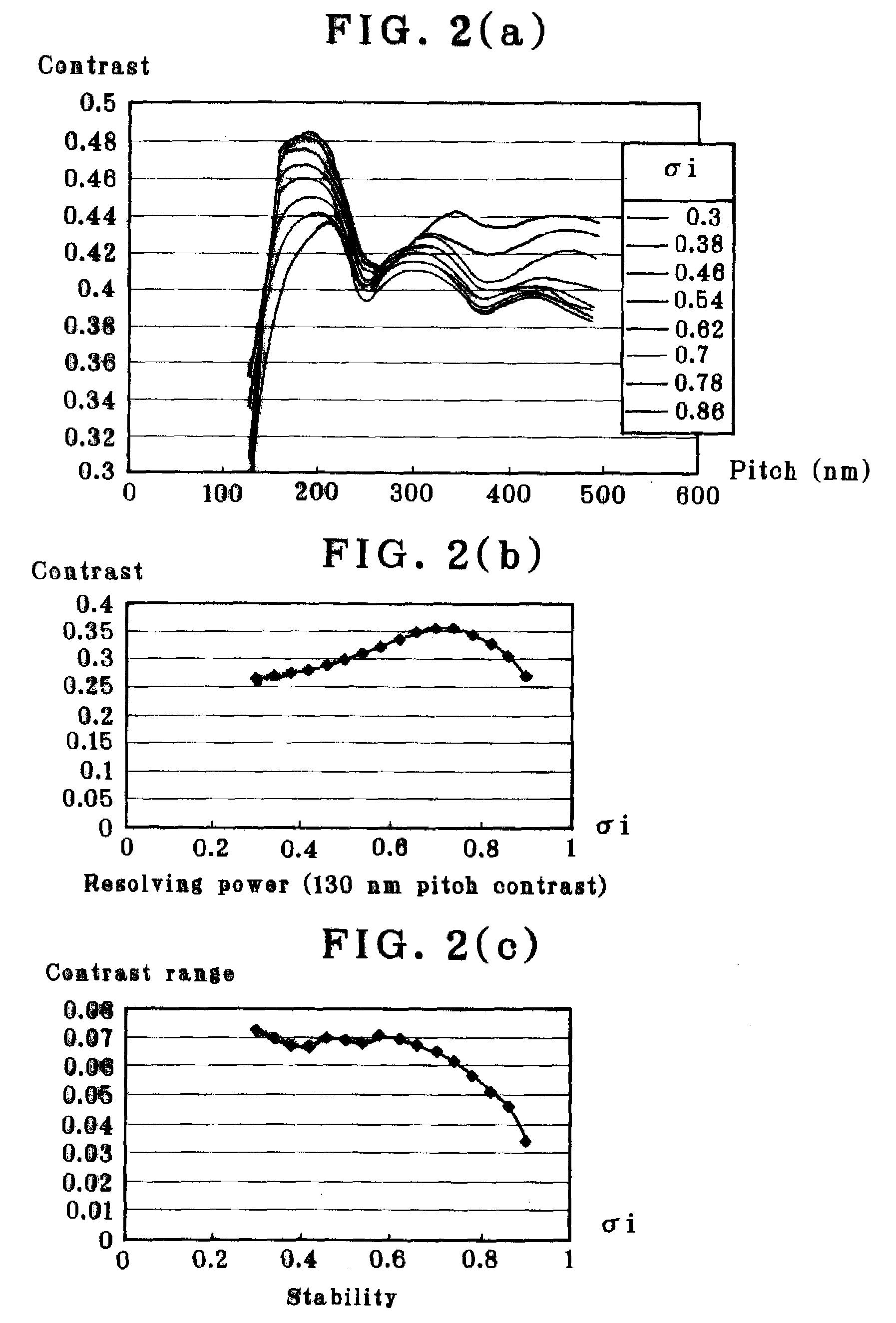Diffractive optical device, and aligner comprising that device
a technology of diffractive optical and aligner, which is applied in the direction of photomechanical treatment, printers, instruments, etc., can solve the problems of limiting engendering other problems, and the efficiency of semiconductor exposure is much worse, so as to reduce the load on optical proximity correction, prevent a decrease in the quantity of light transmitting, and enhance the efficiency of semiconductor alignmen
- Summary
- Abstract
- Description
- Claims
- Application Information
AI Technical Summary
Benefits of technology
Problems solved by technology
Method used
Image
Examples
examples
[0077]The invention is now explained in further details with reference to one specific example. This example is directed to a computer-generated hologram device having design specifications: the minimum pitch of the basic diffraction grating of 4,000 nm, the exit angle of 3.5° upon irradiation with illumination light, the 8 phase steps, and the transparent synthetic quartz substrate workpiece. Note here that the height specifications for each step were 193 nm, and the value of each part of the dipole pupil filter having two fan-form light transmissive areas formed by use of this diffractive optical device, too, was designed beforehand.
[0078]First, there was a photomask substrate readied up, which had a metal chromium film formed on one surface of an optically polished, transparent synthetic quartz substrate of 6 inches square and 6.35 mm thickness. After a positive type EB resist (ZEP7000 made by Nippon Zeon Co., Ltd.) was coated by rotational coating on the metal chromium film, dat...
PUM
 Login to View More
Login to View More Abstract
Description
Claims
Application Information
 Login to View More
Login to View More - R&D
- Intellectual Property
- Life Sciences
- Materials
- Tech Scout
- Unparalleled Data Quality
- Higher Quality Content
- 60% Fewer Hallucinations
Browse by: Latest US Patents, China's latest patents, Technical Efficacy Thesaurus, Application Domain, Technology Topic, Popular Technical Reports.
© 2025 PatSnap. All rights reserved.Legal|Privacy policy|Modern Slavery Act Transparency Statement|Sitemap|About US| Contact US: help@patsnap.com



